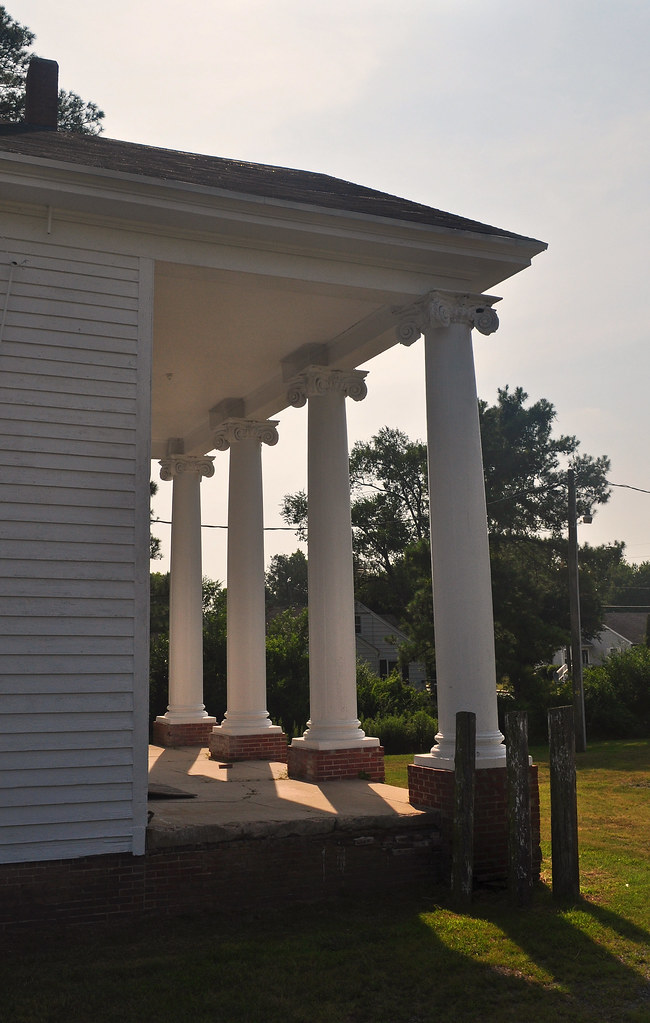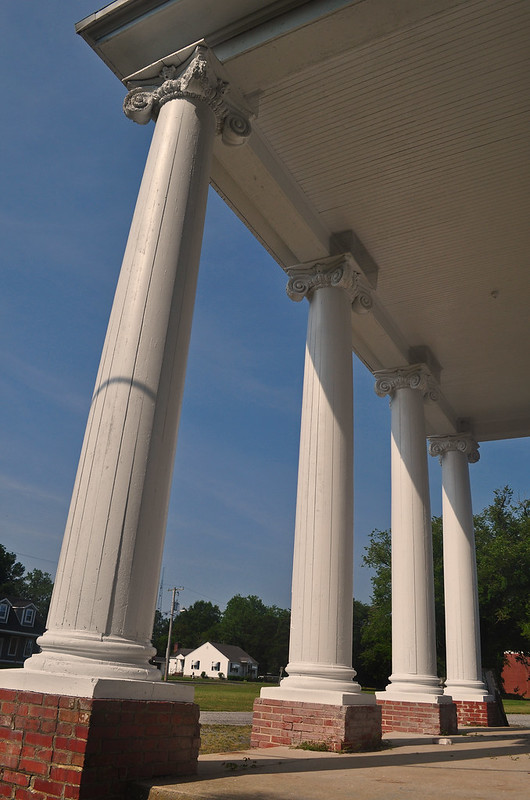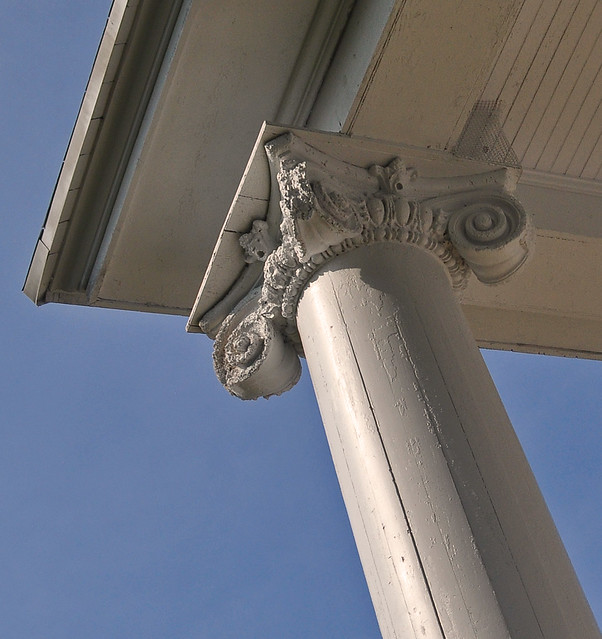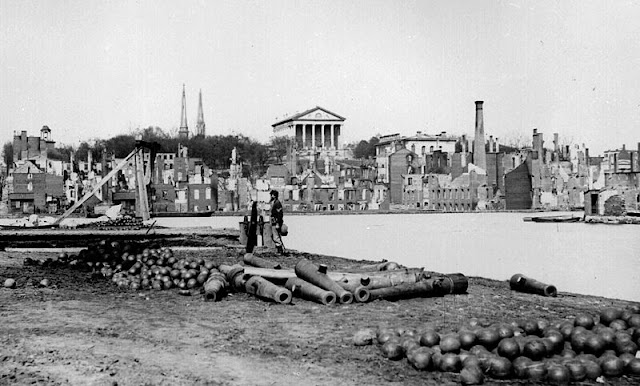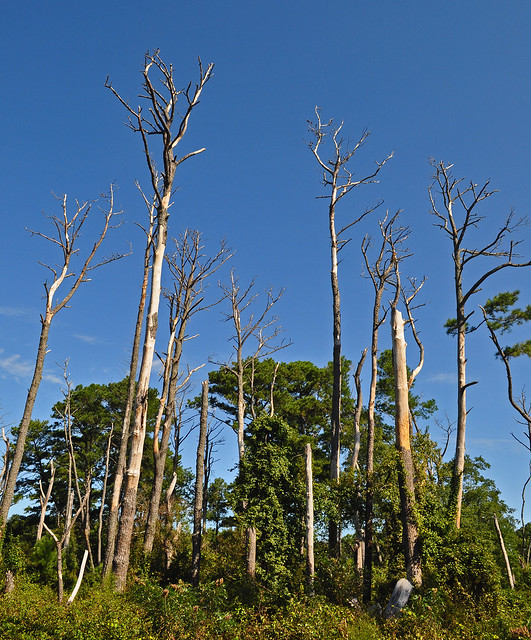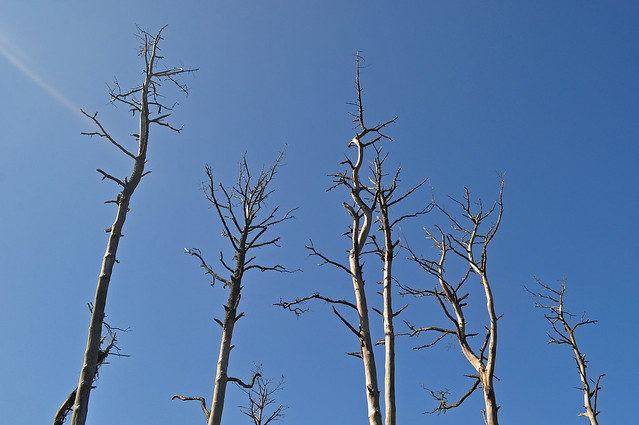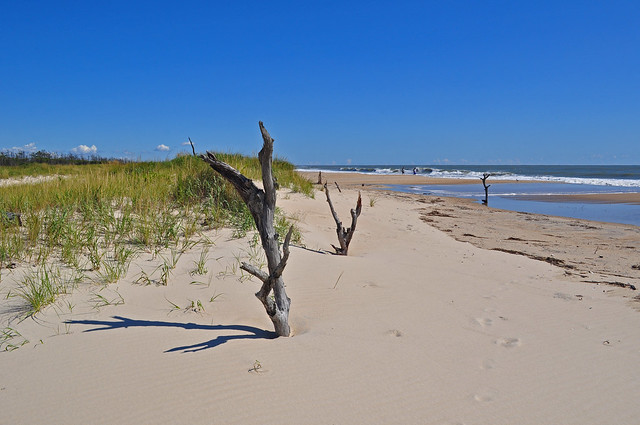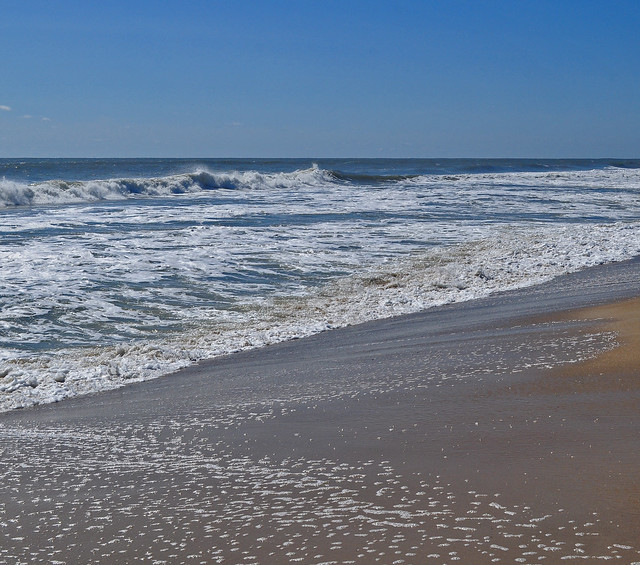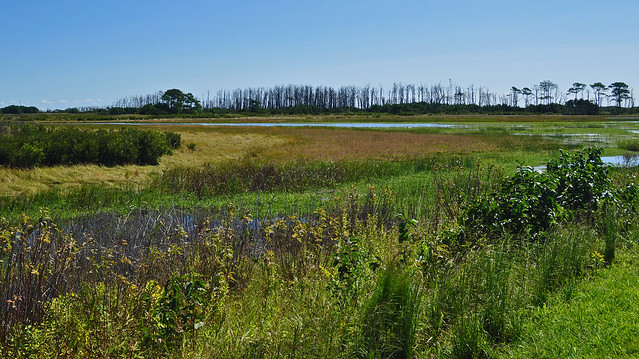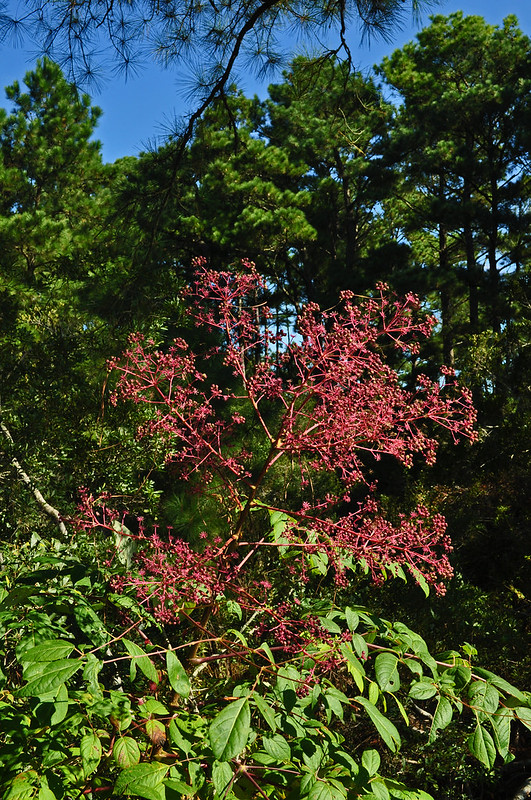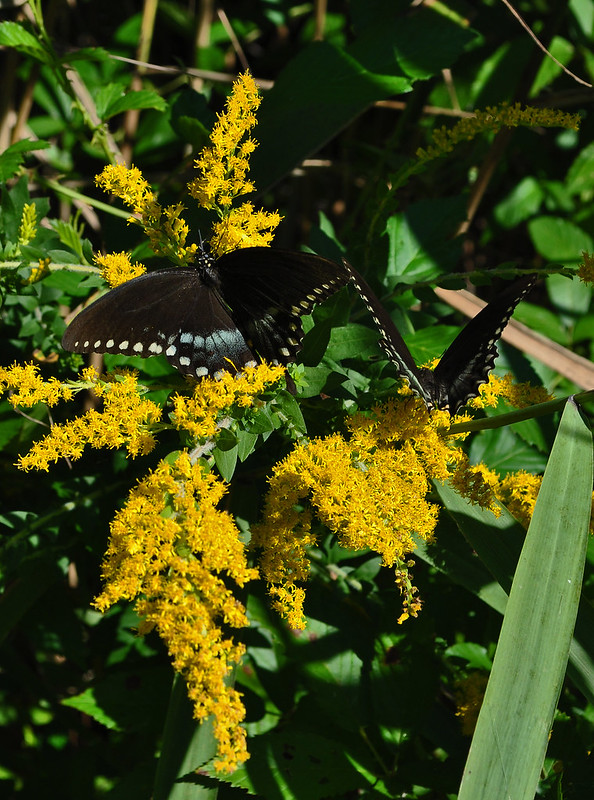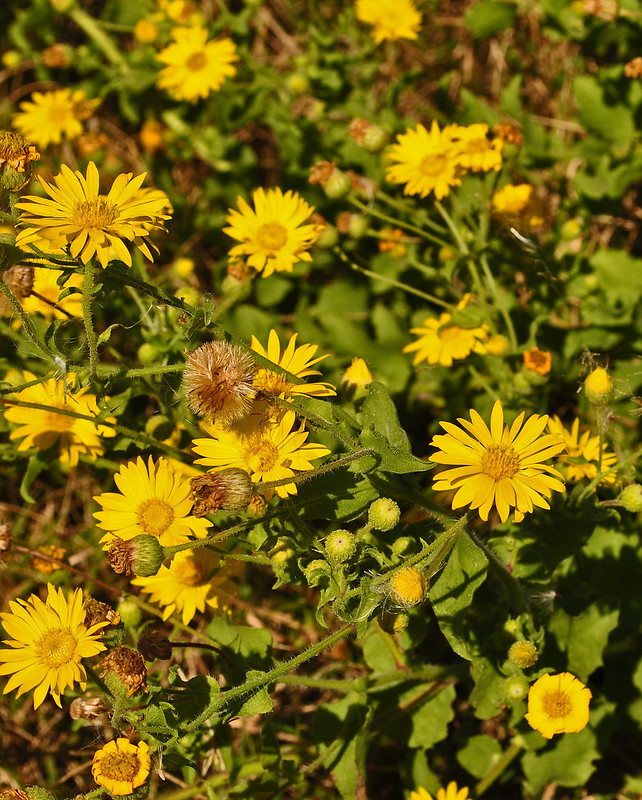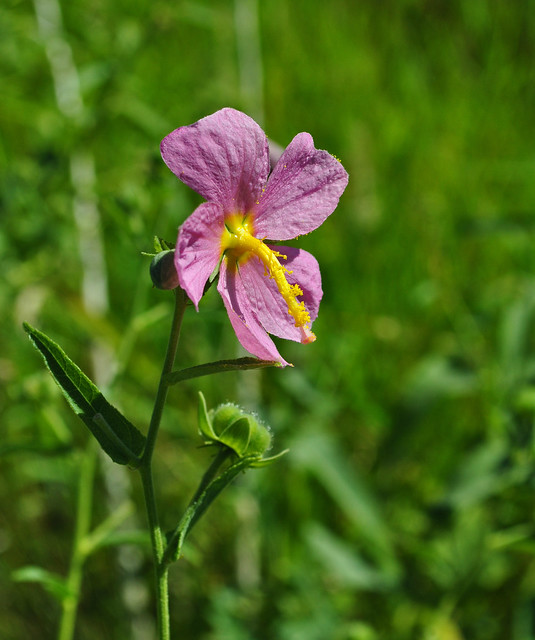The "modern" school also has a temple form in the center of the overall structure. Unfortunately the fate of both buildings is uncertain. It has been a long time since either has been used to teach students, and money for nonessential renovations does not flow freely in one of Virginia's poorest counties.
However, I am taking it as an encouraging sign that the county is still keeping both buildings painted. A bright white has recently replaced the very dull ocher that was on the old building for years. This freshness is what prompted my photos, and made me ponder, for the first time, a crude resemblance between the temple in Accomac and another more famous building in Richmond, both with Ionic columns.
Virginia's capitol building was designed by Thomas Jefferson and Charles-Louis Clérisseau, and it is considered the first neoclassical building built in North America. The two took their inspiration from the Maison Carrée in Nimes, France, a very well preserved Roman temple, and we know the Romans took their architectural inspiration from the Greeks.
Out of necessity the capitol has changed over the years, most noticeably with the addition of wings and front steps.
It has also survived several crises in its 200+ years, including this proposed renovation from 1973 (as if Jefferson didn't have enough to keep him from turning over in his grave).
The building also served as the capitol of the Confederacy during most of the Civil War, and at the end of the war survived its greatest threat. When it became clear the war was lost, the evacuating Confederate forces torched the warehouses to keep the stores from Union hands. Unfortunately for the citizens of Richmond, the fire spread uncontrollably and much of the town was destroyed, however, the capitol was spared.
With the city still burning, the mayor of Richmond and a group of citizens surrendered the city to nearby Union troops, who managed to quell the fire. Some might say that the citizens and their city deserved what happened, but recent history has led me to believe that there are times when some compassion ought to be considered for everyone, even those that make ignorant shortsighted choices, and back wrong causes.

